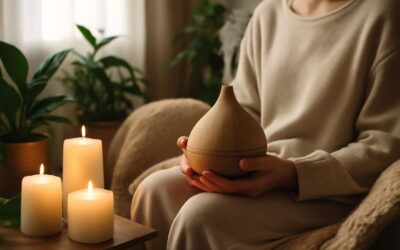
Aromatherapy diffusers are a convenient way to add fragrance to any room. They are also stylish, portable and effective at improving your mood and boosting your overall well-being. However, before you buy an aromatherapy diffuser, you should know that there are several different types available. It is a good idea to follow the manufacturer’s directions so that you can get the most out of your purchase.
There are three basic types of aromatherapy diffusers. These include atomizing diffusers, nebulizing diffusers, and ultrasonic oil diffusers. Each type uses a slightly different method to distribute essential oils into the air.
Atomizing diffusers break down the essential oils into smaller molecules. This is a faster method for dispersing the essential oils than nebulizing. The amount of time it takes to disperse the oils into the air is determined by the size of the pump. You can choose from different models depending on your budget and needs.
Nebulizing diffusers use a high-velocity air stream to disperse the oil in fine mist. The nebulizer works by releasing the lighter chemical components of the oil first, followed by the heavier chemical components later.
Hand-blown glass diffusers are beautiful and practical. Essential oils can be placed in the clear glass unit. A convenient timer makes it easy to control the length of the fragrance.
Ultrasonic oil diffusers are a great way to fill an entire room with a pleasant scent. These are ideal for dry, drier, and air-conditioned rooms. An atomizing diffuser is also an effective option, but requires a bit more maintenance. Rubbing alcohol can be added to the unit to dissolve any residue that might accumulate.
Whether you’re using a nebulizing, atomizing, or hand-blown diffuser, it’s important to follow the manufacturer’s instructions. Not only will you be able to enjoy your aromatherapy experience more effectively, but you’ll also be doing your part to prevent clogged nozzles. In addition, you’ll be able to choose the most appropriate fragrances for your room.
For example, lavender, eucalyptus, rosemary, sage, and lemon are anti-microbial essential oils that can help fight odors and bacteria in your home. While these oils have a soothing effect, they can also irritate mucous membranes, so it’s best to use caution. Other common essential oils to avoid are eucalyptus, pine, cinnamon, cajuput, and thyme.
Choosing the right aromatherapy diffuser for you is easy. The most important thing to remember is that you should only use small amounts of essential oils at a time. That’s because the longer the molecule remains in the oil, the less fragrant it becomes. Using a diffuser with a high capacity will allow you to diffuse more at once, but it’s always a good idea to start with fewer drops to avoid overwhelming your nose.
Some diffusers have a timer, which means that they automatically shut off when the set time has expired. Others have a continuous run feature, which means that they run continuously until you turn them off. Even though these diffusers are a little more expensive, they are worth the investment.


0 Comments